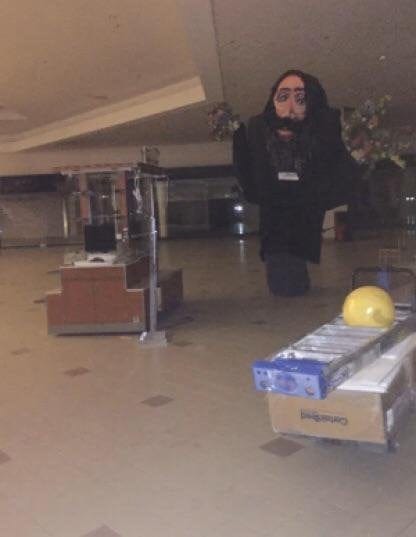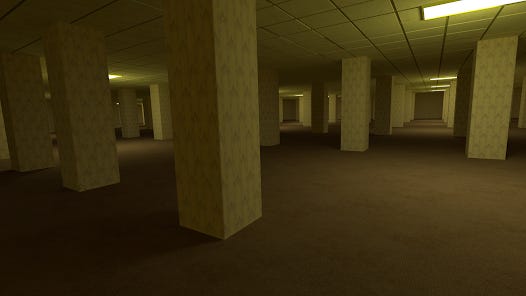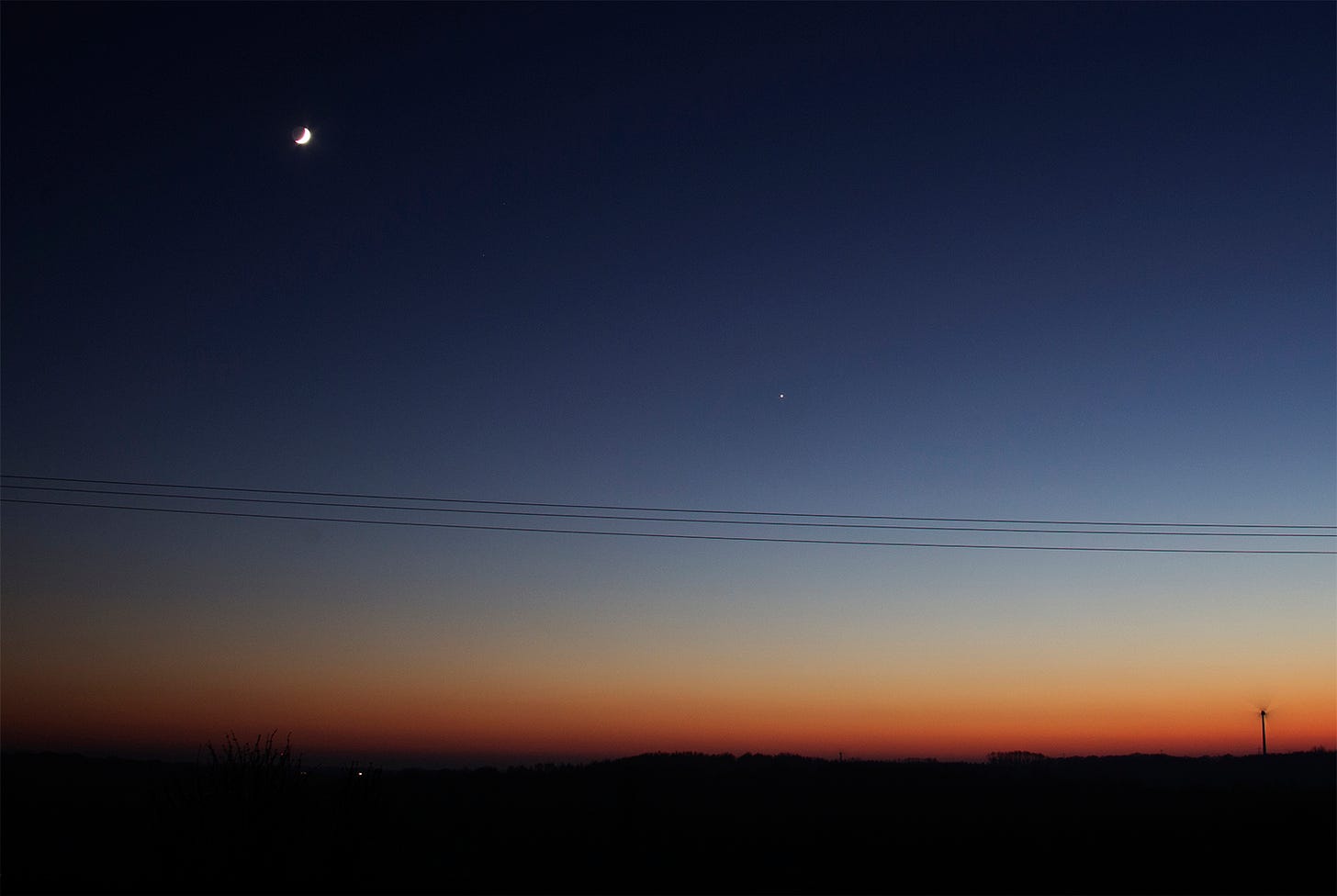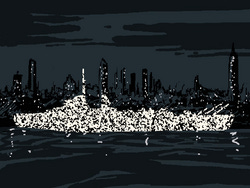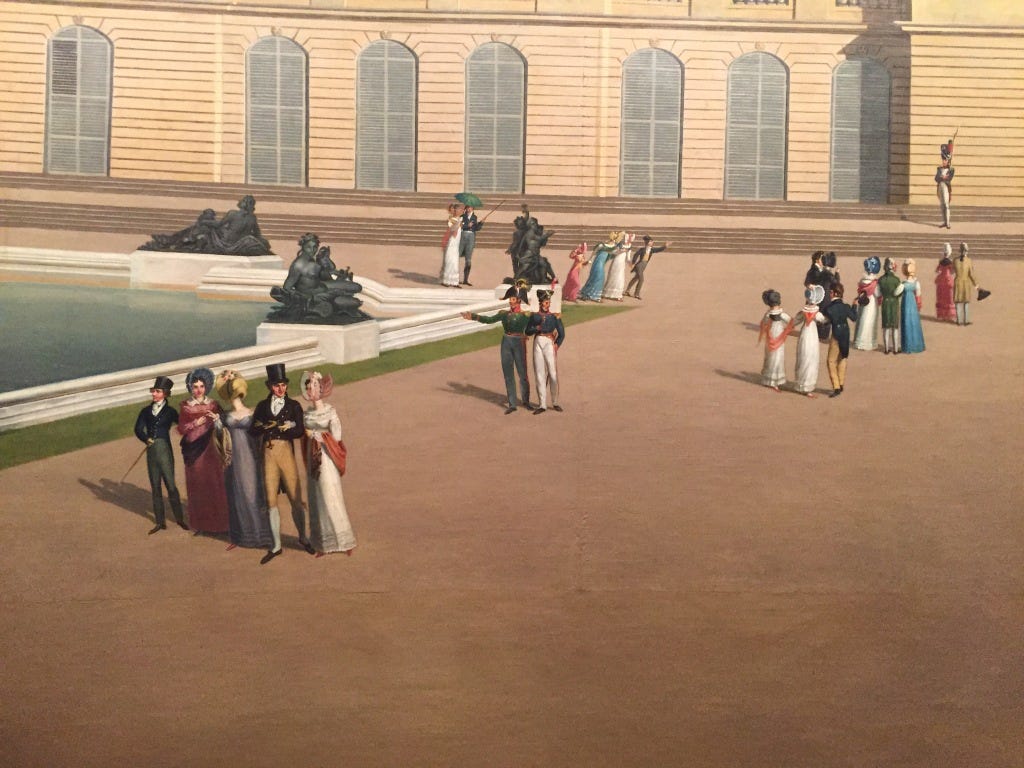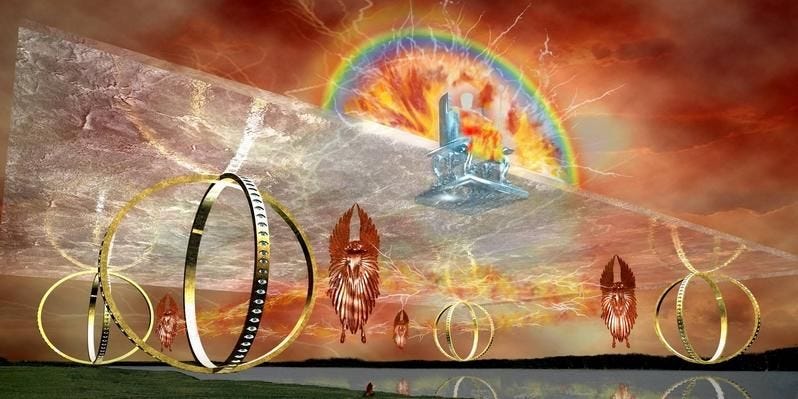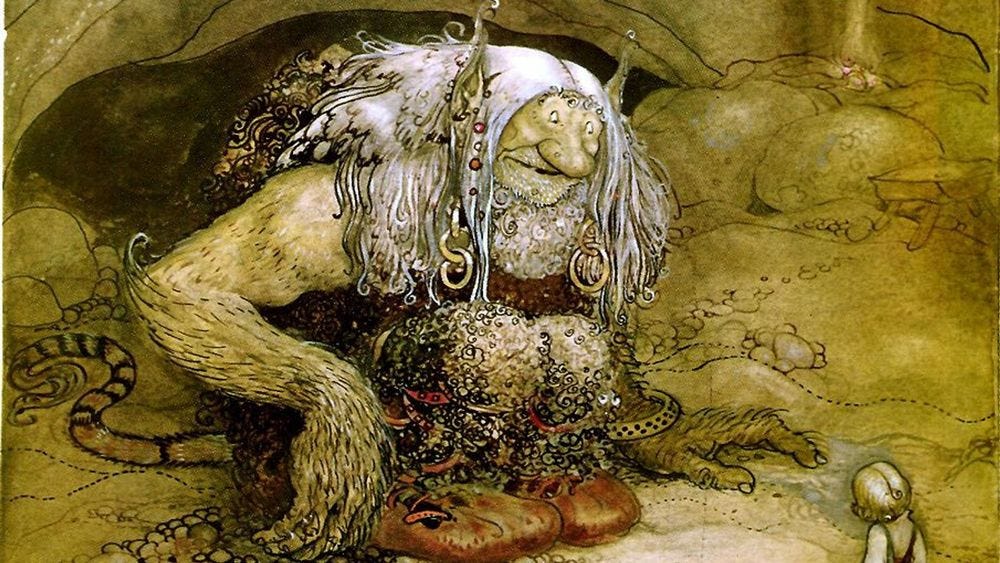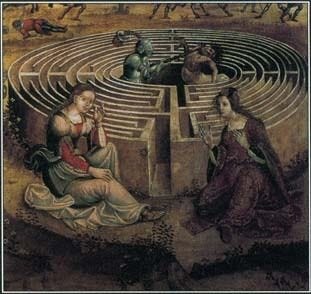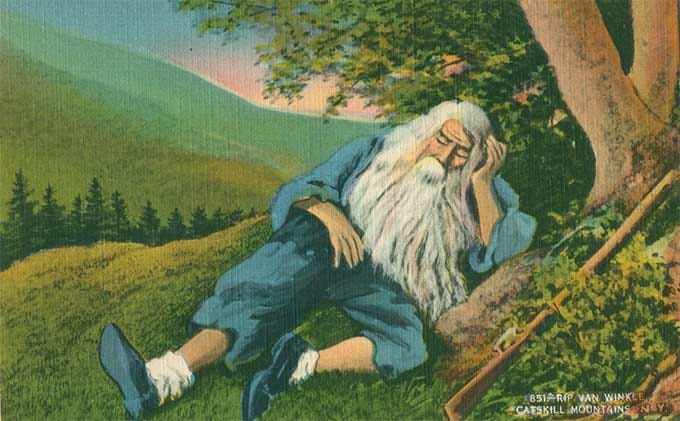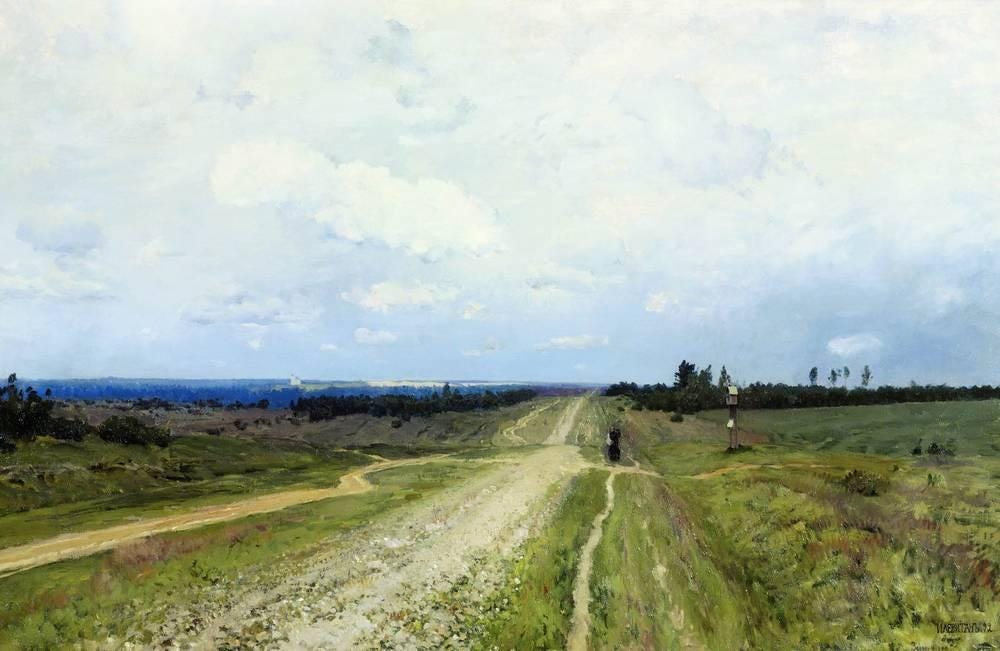Psychosis & Fairytales in the Digital Age
We dwell in a liminal space: a threshold between the old world of fairytales and the new science fiction we live through each day in the Digital Age.
You step into the room for the final time. All of the objects that comprised your daily rituals, gone. The walls, stripped of their pictures and memories, stand bare, and the floor is silent except for the faint creaks beneath your feet. The room feels strangely different, almost as if it’s holding its breath.
As you look around, your eyes trace the faint outlines of where furniture used to be, the subtle marks on the floor that whisper of countless moments once shared here. You remember the laughter that filled this space, the quiet evenings spent in its corners, and the milestones celebrated within these walls. Sadness and nostalgia fills up that very space. It might not be till years later, when you’ve finally settled somewhere new and comfortable, that you dispel the shattering effect of the liminal space.
That feeling you’re getting is one of being in a liminal space: being stuck in-between places. Or as the Brits would say, being away with the fairies.
It also brings to mind the Japanese concept of wabi-sabi. The emotional experience of encountering a liminal space—feeling a mix of nostalgia, familiarity, and the poignant beauty of decay. Wabi-sabi brings both the aesthetic appreciation of imperfections and the beauty found in the aging process.
Young people today appear to be extremely susceptible to this sensation. Usually staying indoors, we are spending more time on weed, psychedelics and video games. Our headspaces are fully occupied by impressions of this façade of reality. Code, data and software are more real to us, in a sense, than the grass and trees of our genesis. How much time have you spent on your smartphone today as compared to how much time you’ve spent walking on the grass? For me, the answer is perturbing.
Let me show you. Take this (genuine) photo—take a minute to consider what it makes you think about.
Everything in this photo fits together because it’s all from the same time and place, but the peculiarity of the giant is impossible to ignore. The abandoned mall gives this impression that this thing remains locked down here, staring off into a wall where no one else will see it again. That’s exactly what happened: this picture was taken inside a closed-off mall and buried within it is the last “giant”. A rolling tribute to a botanist whose work inspired the region for many decades before fading into obscurity. A final ritual, giving life to this fascinating flower-handed figure. It’s back again, in your headspace, and in those of many others who saw the photograph over the past year or so. Since the photo became viral, people have been making custom giants in their local malls.
In the opening paragraph, I shared a rather relatable yet personal experience. I have been moving across various houses over the past five years. One day I felt that the streets weren’t attached to a particular place or point in time. I had no normal environment: it was consistently changing. Being in a new but familiar place gave me this feeling of liminality.
There is relativity to one’s experience of the liminal. For a hotel worker (an insider) or a person passing by with disinterest (a total outsider), the hotel would have a very different connotation. To a traveler staying there, the hotel would function as a liminal zone, just as "doors and windows and hallways and gates frame...the definitively liminal condition". So it is perhaps the same with my experience in those streets, knowing in my bones I was an outsider despite the familiar, even tranquil atmosphere.
Our generation exists in a busy, ever-changing world. It’s because of the news cycle, the rate of technology, and the sociopolitical shifts happening all at once. This is a a truly tumultuous time to be around. And certainly when our brains are still developing. Liminal spaces lead to catharsis. We project our deep-seated anxieties about the future onto a physical space. Many millions of us deliberately share pictures, audio and stories of liminal spaces over YouTube, Reddit and every other type of social media platform. Generation Z are old enough to have memories of public spaces such as theme parks, shopping malls and parking lots, but we are not yet old enough for their closure to be common or regular for us. When we see this happening, whether in person or via a photograph, we experience the familiarity of the location with something more offbeat, as if teasing the possibility things could pop out of existence. In particular, when the object of the image predates us but not the people and media depicting it. As if filling in the gap where nostalgia should be, we instead feel like we are holding a hallucinated memory in our head. Uncanny, oddly familiar but with a subtle undertone of the offbeat.
With the presence of computers and virtual reality in our lives, the prospect that we are beings in a simulation becomes more and more plausible to us. Perhaps this is why our minds voyage out into liminal spaces. We have an intuitive drive towards catching this backdoor plane of existence. In particular, the Internet phenomenon known as “the Backrooms” has turned this concept into a well-established genre of horror.
Make no mistake, creative horror, whether from a Grimm’s fairytale, or a children’s video game, exists to process trauma. Then the popularity of this kind of media, liminal spaces, and even music such as dreamcore and traumacore, is easily explainable when you see the endless barrage of torment the minds of the young go through. Our brains have gone from reeling from the television onto something even more instant and demanding of our minds.
Consider the scale of hyper-popular media, and the brains of people between the ages of ten to twenty-seven. More and more viewers will become old enough to get through the age filters and this genre will only continue to multiply in many other directions.
Presently there could be upwards of half a billion viewers of horror-related media on the Internet, from Five Nights at Freddy’s to the Backrooms videos to Skibidi Toilet.
Our previous generations used physical tools, clothing, housing, and cities to extend and protect their central nervous system. These tools helped manage and buffer the impacts of the environment on humans. Now however we open up our headspaces to outer forces: propaganda, psychic parasites, and algorithms feeding on our eyeballs. The central nervous system has gone numb (for survival). With electronic technology, we become an extension of the technology, instead of the reverse.
Growing up with the Internet and smartphones, Generation Z and those even younger than them have had their mental faculties hanging out their skulls for nearly two decades now.
It’s not just space that can be liminal, but time too. Equinoxes and solstices represent fleeting moments when day and night teeter on the edge of change. These transitions spark ancient practices like fortune-telling. Many cultures hold that actions on New Year's Day shape the coming year, giving rise to traditions like first-footing. Such times are also believed to attract ghosts—ethereal beings caught between life and death.
Twilight is a liminal time, between day and night. The famous show from the 1960s The Twilight Zone makes reference to this, describing itself as "the middle ground between light and shadow, between science and superstition”. The name is from an actual zone observable from space where daylight or shadow advances or retreats about the Earth. Who doesn’t feel like they’re in a strange dimension as they’re peering into the shimmers of twilight?
Twilight, the period between day and night, is not just a physical phenomenon but also a powerful symbol. According to Carl Jung, symbols convey meanings that transcend their sensory presence and tap into the collective unconscious.
Our minds are vulnerable and exposed to transmissions from electronic media. Yet liminal spaces far predate technology such as the Internet or television. Psychosis aside, has there been any actual evidence of a liminal space that seems to transcend laws of physics as we understand them? Has anyone actually stumbled into the Backrooms, or slipped into a different time when on a walk one day?
The year was 1943. The U.S. Navy were developing military technology at the Philadelphia Naval Shipyard. They tried to make, the story goes, the USS Eldridge, a destroyer escort, invisible to radar using electromagnetic fields. Instead, the ship disappeared from sight and reappeared elsewhere, with some crew members fused with the ship's metal. There are accounts of Navy personnel and witnesses who reported seeing this happen as well as the unusual physical effects on the ship and its crew. Declassified documents and subsequent investigations revealed that the U.S. Navy was conducting experiments in electromagnetic fields, though these did not confirm the story in spite of how captivating the tale is.
Even before the Philadelphia experiments, two Englishwomen, Charlotte Anne Moberly and Eleanor Jourdain may have walked out of the bounds of their time and into the distant past. While visiting the Palace of Versailles, the two wandered into an area of the palace that appeared to transport them back to the 18th century, experiencing the palace as it was during the time of Marie Antoinette.
The women saw people dressed in period clothing and had a sense of disorientation and temporal displacement. They had detailed and consistent accounts of experiencing the Palace of Versailles as it was during the 18th century, despite being in an area that was not usually open to the public at the time. This unusual setting, coupled with the detailed nature of their account, provides compelling evidence supporting their claims of a time slip. Still, there’s no reason to take this tale at face value.
Even older is the legend of the green children of Woolpit. In the 12th century, two children of unusual skin colour reportedly appeared in the village of Woolpit in Suffolk, England. The children, found to be brother and sister, were of generally normal appearance except for the green colour of their skin. They spoke in an unknown language and would eat only raw broad beans. Eventually, they learned to eat other food and lost their green colour, but the boy was sickly and died around the time of his and his sister's baptism. The girl adjusted to her new life, but she was considered to be "very wanton and impudent". After she learned to speak English, the girl explained that she and her brother had come from a land where the sun never shone, and the light was like twilight. According to one version of the story, she said that everything there was green; according to another, she said it was called Saint Martin's Land.
Just like Ghost stories or UFO abduction tales, these cases can’t be proven. It seems far more probable to me that we are in a simulation, than that these two cases actually happened. But do liminal spaces only exist in modern history? What about our ancestors, with their beliefs about Limbo, Purgatory, of realms that exist in-between states of life and death?
Those Who Dwell in Life-In-Death
Her lips were red, her looks were free–The Night-mare LIFE-IN-DEATH was she
Liminal existence can be located in a separated sacred space, which occupies a sacred time. In Jacob's dream (Genesis 28:12–19), he encounters God at the intersection of heaven and earth. Similarly, Isaiah meets the Lord in the temple of holiness (Isaiah 6:1–6). In these liminal spaces, individuals receive divine revelations, where God imparts sacred knowledge to them. Worship can be seen as the church community entering a shared, transformative space together. Through prayer, song, or liturgical acts, the congregation undergoes a transformation, and as they leave, they are sent back into the world to serve. And then there’s the liminal OS created by Terry Davis afflicted with schizophrenia who also believed he served the word of God.
Yet the entity that Ezekiel saw in his vision (Ezekiel 1) is even more terrifying and incomprehensible than any of those spaces.
There is nothing new about liminal spaces. Even while the Backrooms is trending over the internet with hundreds of millions of views, there are innumerous other forms of surrealist artwork populating movies, shows, books and music. All of this can be seen in a different way we use to see the world: when we were beholden to nature instead of man-made infrastructure and communicated this through fairytales.
In our primitive days we had to come up with creative archetypes and stories to make sense and interpret the natural world around us. When people used to disappear from existence, we’d blame the fairies.
Every society has their own version of liminal spaces in mythology/… European folklore introduces Changelings, where fairies steal human babies and replace them with their own kind, taking the stolen children to a mystical fairy realm. An early warning about Deepfakes, perhaps?
It evokes a sense of being taken out of the time and place you belong to, like the Scandinavian idea of being "spirited away" or "berg-tagen."
Greek mythology's Labyrinth of Crete further illustrates the theme of inescapable liminality, symbolizing life’s trials through a complex, confounding space.
Similarly, Celtic mythology's Otherworld, particularly Tír na nÓg, represents a parallel realm where the rules of time and space dissolve, creating a land of eternal youth and beauty that is as perilous as it is enchanting.
Japanese folklore offers a haunting vision of a ghostly realm inhabited by Yūrei—spirits trapped between the living and the dead, existing in a cold, shadowy limbo due to unresolved emotions.
Across the pond, this spectral liminality is echoed in Native American traditions of the Spirit World or Dreamtime, where spirits inhabit a realm that bridges the spiritual and the tangible.
Some time later came Rip Van Winkle's American folklore tale, who, after falling asleep in the Catskill Mountains, awakens 20 years later, having missed the American Revolution.
In Slavic mythology, the Nav’ is a fog-laden underworld where time is suspended, and spirits wander in a realm of perpetual twilight.
This mirrors the ancient Jewish belief in Sheol, a dark, silent underworld where all souls reside after death, stripped of moral distinctions and existing in a state of gloom.
Norse mythology's Helheim rounds out this exploration, depicting a cold, shadowy realm reserved for those who did not die gloriously in battle. This underworld is characterized by harsh terrain and a sense of foreboding, reflecting the same themes of existential and environmental liminality seen in the other mythical realms.
Both modern and primitive society, in their imagination, have been pointing to the same thing. While mythology serves sociological functions, there may be a more troubling conclusion to make here.
We do live in a world where we can pop in and out of existence, whether that means dying, a shift in entropy that removes us, or the code simulating us gets erased by our creators. Perhaps we’ve known it all along, and now that we have more evidence that the processes underpinning sentience can manifest in a non-physical state, we move ever closer towards our sudden and callous discorporation. After all, isn’t life itself a liminal space?
Poll: Which Hell Will You End Up In?
Appendices:
See also Turner:
'The attributes of liminality or of liminal personae ("threshold people") are necessarily ambiguous'.[16] One's sense of identity dissolves to some extent, bringing about disorientation, but also the possibility of new perspectives. Turner posits that, if liminality is regarded as a time and place of withdrawal from normal modes of social action, it potentially can be seen as a period of scrutiny for central values and axioms of the culture where it occurs.[17]—one where normal limits to thought, self-understanding, and behavior are undone. In such situations, "the very structure of society [is] temporarily suspended"[8]. Turner attributed a rather univocally positive connotation to liminal situations as ways of renewal when liminal situations can be periods of uncertainty, anguish, even existential fear: a facing of the abyss in void.[20]”




